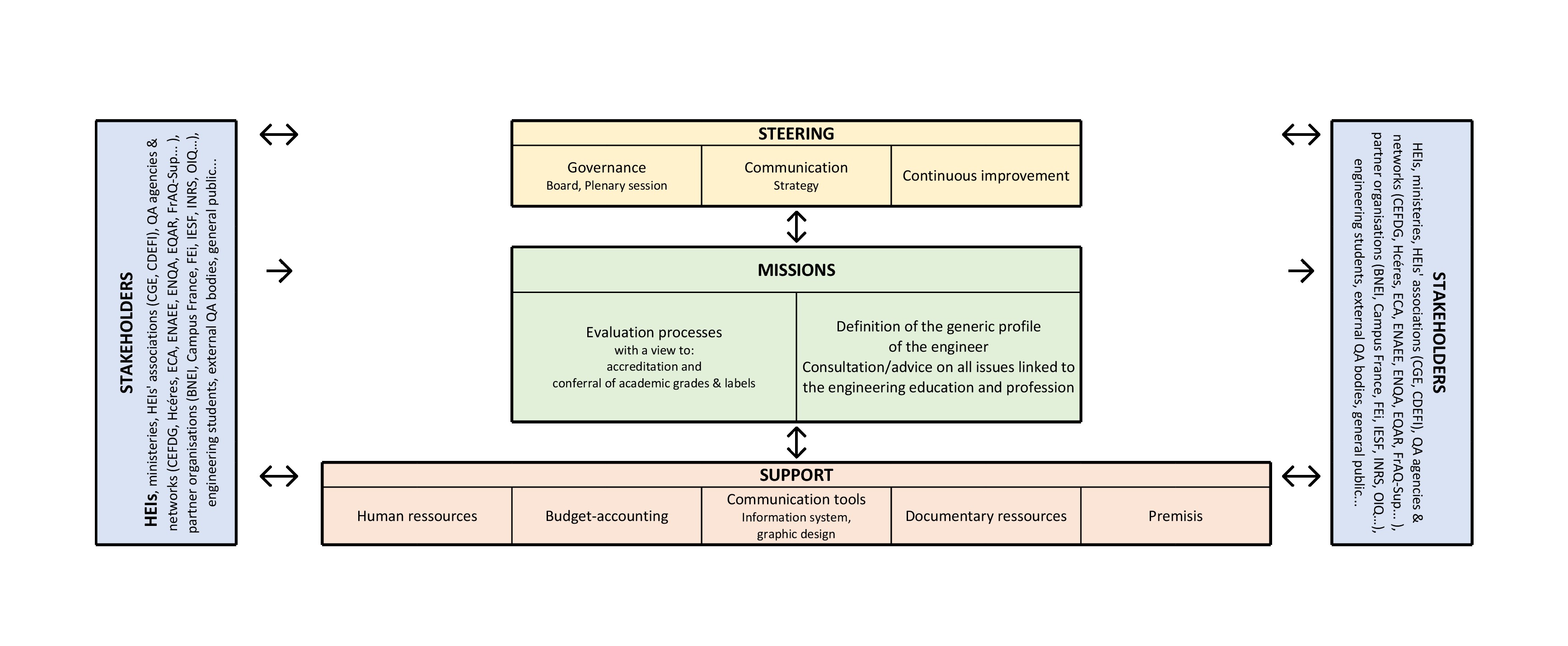
The CTI’s internal quality cartography was developed in 2008 and was updated in 2022. This cartography is composed of a general process diagram.
The CTI quality handbook is currently being developped.
Since putting into place its internal quality system, the CTI has been committed to deploying its internal quality assurance and to developing specific tools for the tracking and control of its assessment and accreditation process.
This system includes:
* Defining, assuring and enhancing the quality and integrity of CTI’s activities through steering committees and working groups which submit their proposals to be discussed and – where appropriate – voted during meetings of the Board and plenary assembly.
* By-laws and charters which describe and guarantee the appropriate professional and ethical behaviour of CTI members, experts, observers, staff.
* Training sessions for members and experts to ensure their appropriate ownership of the CTI’s criteria and procedures and prepare their expected behaviour during evaluation processes.
* Internal and external feedback mechanisms, for instance through:
o satisfaction surveys filled in by HEIs, experts, members;
o meetings and working groups with stakeholders;
o an annual conference;
o transversal analysis and reports on the CTI’s procedures; …
* Communication and information on all activities, internally with members, experts and staff; externally with stakeholders, including the relevant ministries which publish a yearly joint decree listing all engineering accreditation decisions
* Promote the academic and professional recognition of the engineering degree and support the HEIs by:
o publishing the results of the accreditation procedures and information on the level and contents of the engineering degree and the bachelor’s degree;
o signing agreements with foreign organisations (Quality Assurance Agencies and organisations of Chartered Engineers;
o participating in European projects;
o organising and participating in national and international events;
o transversal analysis and reports on the engineering education and profession.

